By Jean-Paul Munsch for Enlivening Edge Magazine
Part 1 of this article described my personal search for the kind of school system I envisioned but couldn’t put into words, and gave the reader a background understanding of the stages of evolution of school systems. This Part 2 describes how I apply my Teal-based model in helping schools move as organizations into the Teal stage.
The first step to become a next-stage/Teal school is to start with the evolutionary purpose. This is the core. The basic questions for school personnel to discover and carve out the evolutionary purpose can be: What do I really wish for myself? What do I deeply wish for others? And finally, what is – according to our deepest potential – the evolutionary purpose of our school and our contribution to the world? This links the individual and the broader perspectives, and at the same time heads and teachers take responsibility for this evolutionary step and for what they want to give to the world.
I was sitting in a gymnasium working with 150 teachers, and during discussions raised by these questions, the whole atmosphere changed.
A vibrant and pulsing energy was noticeable which was greater than the intelligence and the power of any individual. This showed that the process of co-creation was active, connecting the individuals to each other and to the world outside.
Here are some examples of school purposes that have emerged recently:
 The evolutionary purpose of our school is …
The evolutionary purpose of our school is …
- to build a frame in which learning and living together is best possible.
- to help students fulfill their dreams.
- to enable everyone to take responsibility.
Even if teachers are not used to reflecting on these questions, it is crucial to pose them, and thus to discover that only by posing these questions does the “system” of a school open up.
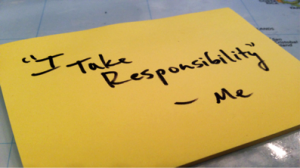 In my work in schools I can see that “taking responsibility” is emerging more and more as an important focus and an evolutionary purpose. “Taking responsibility” includes anybody. “Taking responsibility” means being personally responsible for your actions, for your thoughts and feelings. “There is nobody else to blame for what I am doing.”
In my work in schools I can see that “taking responsibility” is emerging more and more as an important focus and an evolutionary purpose. “Taking responsibility” includes anybody. “Taking responsibility” means being personally responsible for your actions, for your thoughts and feelings. “There is nobody else to blame for what I am doing.”
This leads me to the next step; taking responsibility means that everyone in the school system (and I’m referring e.g. to public schools in Switzerland) has to reflect his or her own responsibility. Some good questions guiding this process can be:
- What can the teachers, students take responsibility of/for?
- What guidance do they need in order to take responsibility?
- Do we as guiders enable people to take responsibility, or do we block energy, with the sort of guidance we are choosing and using?
Or in other words: I perceive a systemic need going on to shift role-linked authority to personal responsibility in order for people to learn together – and to handle heterogeneity and other issues burdening schools in a more human and constructive way.
This is key to breathing life into an evolutionary purpose. If we take responsibility, then instead of the responsibility becoming just a task, something magical happens. Energy is set free for constructive work, energy which was lost in resisting others, complaining about and fighting against circumstances.
As much responsibility as possible has to be given by the authorities to the headmasters, who then pass that on as much as possible to the teachers, and they in turn to the students.
(As we are not living in paradise there are always some limiting factors such as regulations and formalities.)
More important is the fact that leading and enabling this process of taking responsibility releases a dynamic from which the whole system can learn and refuel. And from my vast experience most people are willing to take responsibility when it is given to them.
The head or the headmaster is the key player in this organizational/structural systemic transformation process. Their authority and some of their leadership competencies are especially needed at the beginning, to show how responsibility, roles, and decisions are created and shaped. They are the ones who can hand over responsibility to build structures and processes that enable the teachers in professional learning communities to work on fulfilling the purpose.
Structures to build are:
- Structures that contain the process and commit the teachers to present the results of their projects and their work which they have put into practice in the classrooms.
- Structures that create an environment in which peer feedback and learning from each other can grow.
A clear concept of teacher cooperation breaks up the paradigm of individual isolation and individualism, a situation in which the teachers are stuck in fear, insecurity, guilt, and perfectionism.[i]
It is my job as a consultant to design in detail the paradigm shift and the path of transformation in dialogue with all involved parties. Which elements are needed? What would be a good rhythm of the new organism to live with, to grow, to evolve? How can we lead this process in a constructive way? Which guidelines should be compulsory? The yardstick for intervention is: With the guidelines do we kill energy and trigger resistance or do we activate energy and help the system to feel as safe as possible in a new setting?
Enabling transformation towards evolutionary purpose-focused schools with self-managing teams and a new decision-making process requires dialogic work. In a horizontal dimension, it means to integrate the individual into a group of professionals such as teachers, headmasters, members of authority-systems, and so on. And in a vertical dimension, it means to integrate all perspectives, the different perspectives and needs over various levels of hierarchies to find an integral shape for the system.
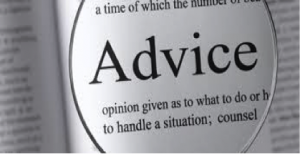 For the next step the head also plays a crucial role: the decision-making process, in particular, the advice process. Dennis Bakke made it radically clear how this works: Everybody can make decisions; everybody must seek advice before making decisions. Every decision must be guided by principles and values and in alignment with the evolutionary purpose.[ii]
For the next step the head also plays a crucial role: the decision-making process, in particular, the advice process. Dennis Bakke made it radically clear how this works: Everybody can make decisions; everybody must seek advice before making decisions. Every decision must be guided by principles and values and in alignment with the evolutionary purpose.[ii]
How do principles and values come into work? In this regard, Frederic Laloux gave us precious food for thought and dialogue. Here are some examples from the list I use to challenge and discuss assumptions and belief systems:
- “We view the organization as having a soul and purpose of its own.
- It’s impossible to change other people. We can only change ourselves.
- We take ownership for our thoughts, beliefs, words, and actions.
- We don’t spread rumors. We don’t talk behind someone’s back.
- We resolve disagreements one-on-one and don’t drag other people into the problem.
- We don’t blame problems on others. When we feel like blaming, we take it as an invitation to reflect on how we might be part of the problem (and the solution).“[iii]
And it is the task of the leader and the manager of the process – this will be the headmaster in some cases and will in other cases be the consultant in co-creation with the headmaster – to create a safe environment in which people can exchange their basic assumptions, challenge their beliefs and views on topics like learning, teaching, leading, etc. Do I see myself as a learner who is on his way? Do we see problems as an invitation to learn? Are we willing to confront each other respectfully? Do we know how to deal with conflicts?
It is about living the newly-discovered and affirmed values in everyday life, to explore them in a dialogic manner, to develop them further and deal with them. And to add another aspect to this essential point: If teachers want to act respectfully toward each other and toward students, it can be very helpful to have regular feedback from the students. Studies show that even in progressive education, the amount of destructive and hurtful words is high, up to 25% of all interactions. It is a lot about awareness of the impact teachers have on students’ learning.[iv]
Although teachers are, in general, not used to working in this process-oriented way, they learn very quickly and appreciate the time they get to work and learn together. They gain experience in an evolving learning process amongst professionals.
What happens is that behind their uncertainty they discover their uniqueness, their self-empowerment, and their possibilities to shape their school.
So I can bring it down to this: Do we help and lead people to take responsibility or do we want people who obediently execute orders? It is simpler, much more fun and beautiful when the evolutionary purpose of the school is “taking responsibility,” and every activity in the system is in alignment with the purpose. What a joy to see what professionals can and will create and innovate when we let them do it. Take heart! Find out! Have fun!
What I tried to present in this article is a model of school evolution that can be applied in different contexts, in different school types, and with people in charge who can have very different backgrounds. At the end of the day it is mostly about how we manage to be in dialogue with others. I invite all of you to contribute with your own experiences and I’m curious to learn more about what others are doing in this sector to enable unfolding the best of our human potential.
[i] Cf. Andy Hargreaves & Michael Fullan: Professional Capital. Transforming Teaching in Every School. Teachers College. New York, p. 106ff.
[ii] cf. Dennis Bakke: Joy at Work. A Revolutionary Approach to Fun on the Job. PVG: Seattle 2005, 97ff.
[iii] Frederic Laloux: Reinventing Organizations. Nelson Parker: Brüssels, 2014, 232.
[iv] Cf. the latest works of Annedore Prengel e.g. Pädagogische Beziehungen zwischen Anerkennung, Verletzung und Ambivalenz. Opladen: Budrich 2013, or of Robert Pianta e.g. “Children cannot be successful in the classroom unless they are successful in relationships – Analysen und Interventionen zur Verbesserung von Lehrer-Schüler-Beziehungen.” In: Annedore Prengel & Ursula Winklhofer (ed.): Kinderrechte in Pädagogischen Beziehungen. Vol. 2: Forschungszugänge. Opladen: Budrich 2014, and of course the groundbreaking works of John Hattie c.f. Visible Learning: A Synthesis of Over 800 Meta-Analyses Relating to Achievement. NY: Routledge 2008.
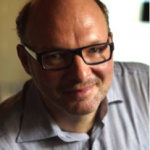 Dr. Jean-Paul Munsch (Zurich, Switzerland,) is a lecturer, consultant, and philosopher who has developed a model for schools going Teal and helps them to implement it. Contact: www.munsch-coach.ch / [email protected] https://ch.linkedin.com/in/jean-paul-munsch-20622a2b
Dr. Jean-Paul Munsch (Zurich, Switzerland,) is a lecturer, consultant, and philosopher who has developed a model for schools going Teal and helps them to implement it. Contact: www.munsch-coach.ch / [email protected] https://ch.linkedin.com/in/jean-paul-munsch-20622a2b
Featured



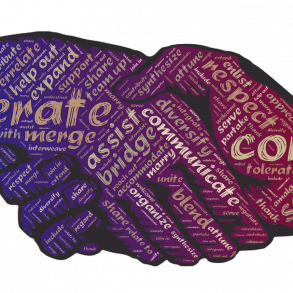
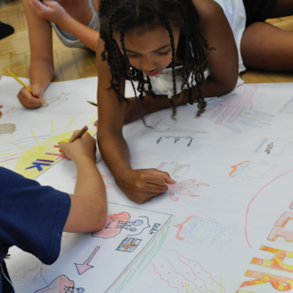
It’s great to see the writing of Dr. Munsch about what Teal schools might look like. I am a founder of the K-12 Sudbury School of Atlanta. I would recommend to those who are interested to check out the Sudbury model of education. I think it is as close to a Teal model of education that currently exists. A few highlights from Sudbury: All learning is self-directed. Much like Teal organizations, there is no “boss.” There is no hierarchy. Helpful staff are always available but they are not responsible for delivering content or evaluating student achievement. There are no imposed classes, grades, tests or homework. They can go outside any time they want. Everything students do is based upon their choosing. Freedom balanced by responsibility are the hallmarks of Sudbury model schools. As Laloux writes about Buurtzorg, “Learning to live with that amount of freedom and responsibility can take some time, and there are often moments of doubt, frustration or confusion. It’s a journey of personal unfolding, in which true professionals are born.” (p. 68) Another hallmark of Sudbury is that students are responsible for managing their learning community. That means that make all the rules of conduct, they have a budget to manage, they have ultimate responsibility for hiring and firing staff. This is all democratically decided through a weekly School Meeting. Again, there is no “boss” or “headmaster” or adult override to what is decided at School Meeting. Decisions are made democratically and collectively and if rules are broken, there is a judicial committee that hears each complaint and decides what to do about it. In our school, it is a solution-focused process that uses Nonviolent Communication. As with Teal organizations, there is no hierarchy or top-down decision-making, however, there is a structure that helps manage community affairs. And lastly, the school is multi-age. All students learn from each other on their pathway to learning. Students are not separately by age or achievement or ability. That separation is arbitrary and only exists in schools, particularly those in an Amber framework. What I love about Sudbury is that Sudbury encourages personal expression and purpose and relies upon intrinsic, not extrinsic motivations. This is a far more powerful educational experience than Amber and Orange model schools. Sudbury has been around since 1968 and began in Framingham, Massachusetts, originally inspired by the Summerhill school in England. There are now more than 40 Sudbury model schools around the world.
Dear David
Thanks for your contribution. I see and I deeply appreciate the work of privately run schools like the Sudbury model schools. It is great to have these examples of democratic schools that give us a clear view and the hope that the system as a whole can move forward. Isn’t it a bit like in Aesop’s fable “The Tortoise and the Hare” where the tortoise is always already there? And „the public school rabbit“ can run as fast as it can and will never arrive?
Let me just add a few personal thoughts about the ongoing discussion.
The notion of responsibility is a key topic for co-creating processes in schools. Giving responsibility (and not just a task) to teachers and students presupposes trust. Trust means to accept our own vulnerability and the fact that one can be hurt in relationships. Teachers and students deserve our true trust. They need it in order to grow, to take responsibility. This is one thing that we can all learn from democratic schools but also, for example, from the un-schooling movement.
Another question is: How much responsibility are children capable of taking? Children can take responsibility for many things (e.g. for their own learning) but it isn’t a good idea to let them take responsibility for the quality of the relationships toward adults. Adults should be in charge to take the lead and shape relationships in a constructive way, in which children can grow. (We can see what happens when helpless parents give up leadership in the relationship with children and when children try to be responsible for what is happening in the family.)
I think that there are many different ways that adults can take the lead in this process. As the experience of democratic schools show, it is important that the adults (teachers, parents) support the chosen approach fully.
To „replace“ relationships through rules is a political mode and not primarily one of guidance and responsibility of adults. In democratic schools (like Summerhill) there is a body of rules to regulate the relationships and the daily life. I’m not against rules but I would feel more comfortable if they were reduced to a few that facilitates life and do not put politics in place of pedagogy.
My central question in this regard is: What kind of orientation do we give children? What kind of guidance do we provide? I think the main orientation we can give children is our own behaviour. What kind of framework and guidance do they need at which age?
I think that at the end of the day children have caught up the atmosphere of the school. The adults create first and foremost the atmosphere by expressing their own relationships – between colleagues and parents – and their relationship towards children. In other words I think it is important what kind of relationships children experience: is this a save surrounding where I can be myself, where I can involve myself without fear of being blamed, embarrassed or ashamed? – So, in my view a teal school has to create safe spaces that students, teachers and parents can all play a part themselves as fully as possible. If I create a set of rules I will behave according to these rules – or not, but not according to the needs and expressions of other human beings.
As far as I can see, this would be something quite new and I don’t know if this is a contradiction to your notions, however, I’m curious what you think about this. You can also tune into our discussion under:
http://discourse.reinventingorganizations.com/t/schools-going-teal/588
Taking a more organizational perspective into account, I see a lot of evolutionary potential in many schools. It might be easier for privately run schools but, interestingly enough, also public schools can go this way with my basic model — and it is fun to see how they develop in a co-creating process and move forward by changing their own ideas of how school should be (and used to be in the earlier stages).
However going teal is a radical shift for most public schools, a massive change, and a huge challenge. This requires this paradoxical act of leadership: to have the power to hand over power — and hand over responsibility in a clear structure in which responsibility, creativity and humaneness can grow. I think this the contribution I can make: To provide an open concept — not actually an established model —that gives people the freedom and the learning environment to develop in every school and to go the way toward teal step by step.
Great insights. Thanks so much for sharing. I will tune into the discussion you mentioned. Sounds very interesting. I agree that traditional model schools will face tremendous challenges in shifting toward a teal paradigm. It’s not just one evolutionary leap, it’s two or three! However, I think this is why traditional model schools are having so many issues right now. The paradigm is outdated and the institution is so deeply entrenched politically, financially and culturally that it may not find its way out. This is why private schools, charters and for-profits are moving in with new models of education. They are much more agile as organizations that can create or embrace more teal-like structures. It will certainly be interesting to see how these structures are implemented going forward.